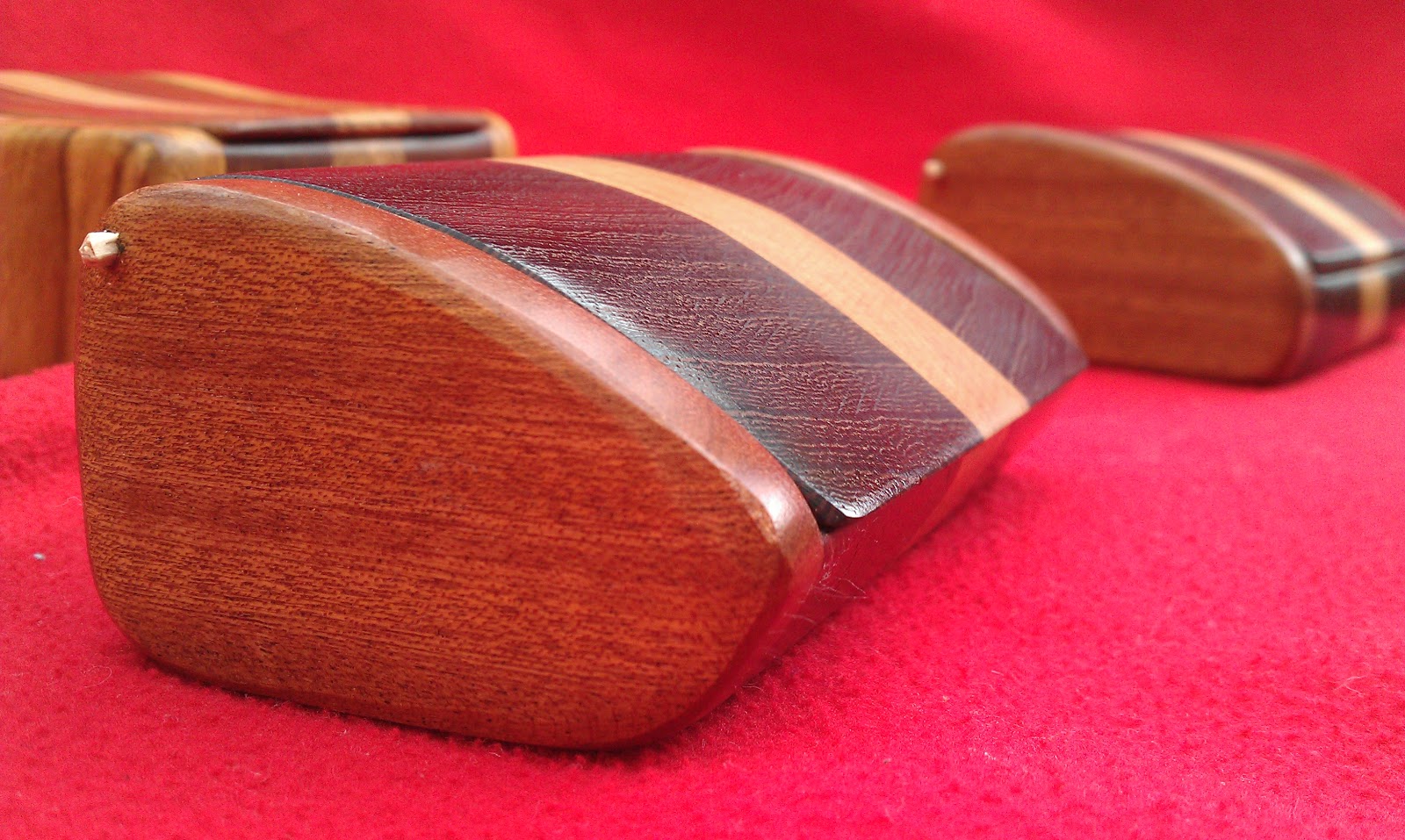For me, woodworking is a total delight. I could spend all day in the workshop and barely notice the hours shuffling by. The only thing that worries me, as my boxes become more popular, is whether I'll have to end up like Henry Ford, with a production line driving through the workshop, vanquishing all the joy along the way. I'm
fairly confident that won't happen, but to help me guard against it I only make a few of each type of box at a time, then switch and focus on another style. I like to think it keeps my work fresh.
Over the weekend I finished milling and sanding some lengths for the inner trays of my Companion boxes (there's a couple of rejects still on the messy workbench up top). They are all ready to dovetail, but I knew that if I carried on and finished the trays I'd have no time left this week to make anything else (I've got a birthday trip to Barcelona later in the week, then it's back to the day job). So, with that in mind, I set about tidying up and launching into some new curved boxes.
Over Christmas I hoarded twenty or so large blanks, all native woods like Oak, Chestnut and the increasingly endangered Ash. Today was the day to get them out and see what they wanted to be. I left some in storage, to make into lidded boxes later on in the Spring, and brought the rest out into the nicely tidied workshop.
The first job was to cut them into box sized pieces. With these boxes in particular, there is no right way to size them, although I have found out once or twice that there is
definitely a wrong way! Usually, I look at the direction of the grain and go with it, unless it is something like Wenge, with its tightly packed, highly contrasting grain, and then I might cut across, although if I do then I have to make sure the finished box has walls thick enough to retain their integrity. Anyway, no Wenge here today so it is right along the grain all the way.
Next comes the arty part. With five sharp pencils, a rubber and an electric heater as close to my toes as I dare let it get, I set about sketching the finished box shape onto the blanks. Again there is no right way to do this. Some people do this part on a piece of paper (no doubt thankful to be indoors where there is central heating) then glue their finished sketch onto the wood blank. However, I prefer to draw directly onto the wood. It means I can take notice of any interesting figure flowing through the wood and try to find a shape which both complements it and also provides sufficient drawer space.
Fitzgerald, Winehouse, Adele, the Killers, plus a stop for lunch, and another for a trawl around the local charity shops, and all the blanks are marked up. One or two need an extra piece glued in the centre to make sufficient depth, and my wife wants the soles of her winter boots glued on, so its time to tick those jobs off and lock up for the night. If all is well then tomorrow I should get a few drawers cut out...












